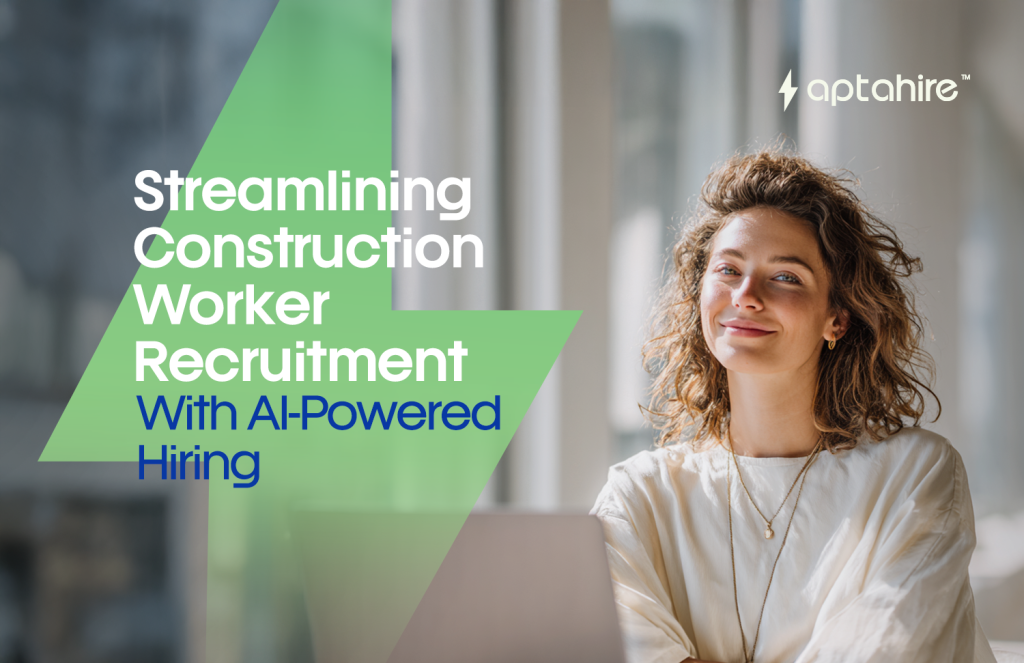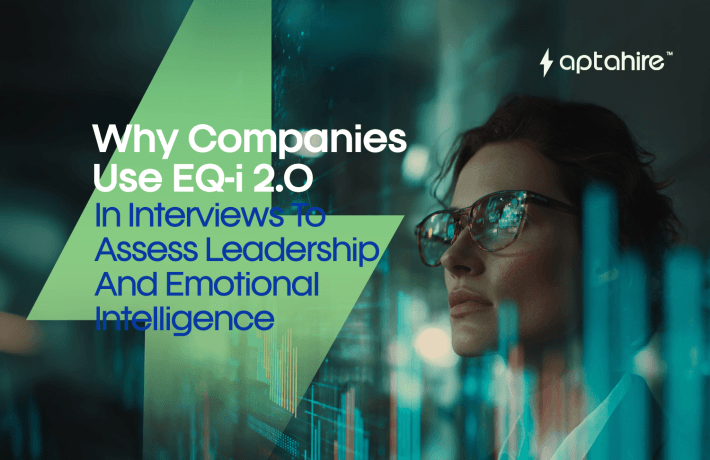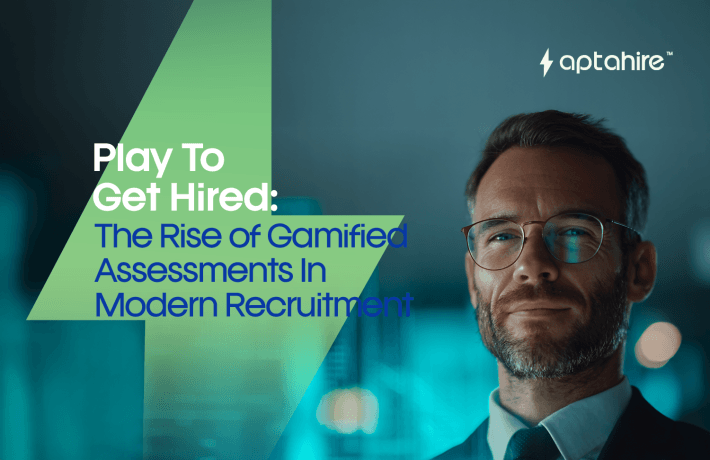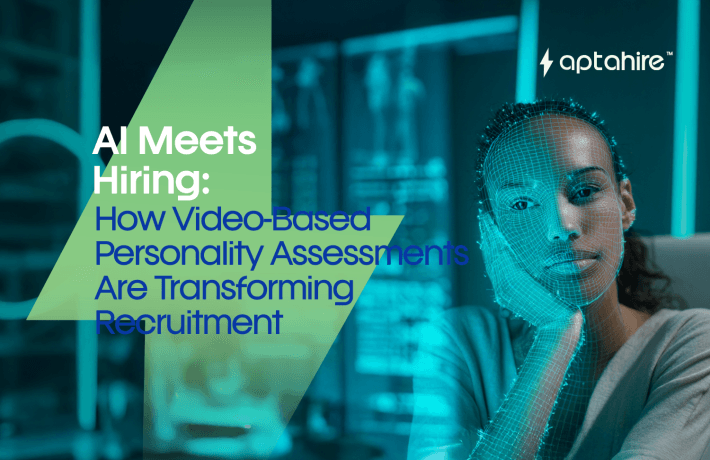Streamlining Construction Worker Recruitment with AI-Powered Hiring

Introduction
Hiring skilled construction workers is not an easy task. Whether you’re building a skyscraper or a suburban housing project, the strength of your crew can literally make or break the job. Yet, the industry still struggles with outdated hiring methods, high turnover, and severe labor shortages. According to McKinsey, the construction sector is the second-least digitized industry in the world, and it shows how hiring is still mostly manual, time-consuming, and prone to costly errors.
But here’s the good news: AI hiring tools are turning the tide. By integrating smart technology into recruitment, construction companies are now able to filter better candidates faster, ensure safety and skill compliance, and reduce hiring lead time, all while maintaining a strong workforce pipeline.
Imagine a system that not only screens resumes in seconds but also assesses a candidate’s physical fitness, safety awareness, and technical know-how, all without a single human bias. That’s what AI is doing today. It’s not replacing human recruiters; it’s amplifying their capabilities, especially in a field where every hour of delay equals money lost.
The Ground Reality: Why Construction Recruitment Needs a Makeover
Construction companies often face:
- Skilled labor shortages: 81% of contractors report trouble filling positions (Associated General Contractors of America, 2024).
- High turnover: Temporary contracts and demanding work cause frequent exits.
- Inefficient screening: Traditional hiring methods take time and often miss the mark.
And let’s be honest, many skilled workers might not have polished resumes or LinkedIn profiles. They’re on the job site, not job boards.
How AI Steps In: Not Just Tech, It’s Practical Help
AI hiring platforms are designed to speed up and smarten the recruitment process. Here’s how they help construction companies:
1. Resume Parsing That Gets the Gist
Even if a resume isn’t fancy, AI can detect relevant skills like welding, crane operation, or blueprint reading. It focuses on ability, not formatting.
2. Skill-Based Matching
AI matches workers to roles based on certifications, past job roles, and even proximity to job sites, cutting irrelevant applicants instantly.
3. Automated Interviewing
Through voice or video-based interviews, AI can assess communication, reliability, and attitude, all important in team-heavy environments.
4. Mobile-Friendly Hiring
Many construction workers use phones, not desktops. AI platforms offer chatbot-based applications and mobile interviews, making the process accessible.
Real-World Insight: Who’s Already Doing It?
- Bechtel, a global construction giant, is investing in AI to optimize workforce management and recruitment.
- Skanska has tested AI screening tools to filter applicants for large-scale infrastructure projects in the U.S.
- Procore, while known for construction software, is developing AI-based tools that could revolutionize hiring project-based workers.
Numbers Don’t Lie: Stats That Cement the Case
- Recruitment time cut by 60% when AI screening tools were used in field operations (Construction Dive, 2023).
- 45% improvement in worker retention by identifying better soft-skill fits through AI interviews.
- Cost-per-hire dropped by 35% for firms using AI platforms vs. traditional hiring agencies.
Tips for Construction Companies Adopting AI Hiring
Start with One Role
Use AI to recruit a single trade (like electricians or site supervisors) to test its accuracy and speed.
Ensure Mobile Accessibility
Choose a hiring platform optimized for mobile, most workers apply on their phones.
Don’t Skip the Human Touch
Let AI do the filtering, but always close with a human-led interview for trust and culture fit.
Focus on Safety Certifications
Ensure your AI is set to prioritize verified safety training, especially for high-risk roles.
Addressing the Concerns: Is AI Replacing People?
Not at all. AI isn’t here to replace hiring managers, it’s here to support them. Think of it as an extra pair of hands that never sleeps and doesn’t miss a detail. It reduces grunt work so HR teams can focus on onboarding, retention, and culture building, the human side of hiring.
The Future Blueprint: Where Is This Going?
With AI hiring integrated into construction software platforms, we could soon see:
- Geo-matching: Hiring based on job site proximity and transport access.
- Skill forecasting: Predicting labor needs based on project pipelines.
- AR-based training + hiring: Workers completing virtual job assessments via mobile before onboarding.
The combination of data + decision-making is going to elevate hiring from reactive to strategic.
Final Thoughts
In a world where deadlines rule and manpower can make or break multimillion-dollar projects, AI-powered hiring is no longer a futuristic concept, it’s a present-day necessity for construction companies.
By combining real-world recruiting challenges with the power of intelligent automation, construction firms can save time, cut costs, reduce attrition, and hire right the first time. From automated background checks and skill-based assessments to predictive analytics on worker performance and site compatibility, AI is helping create a stronger, safer, and smarter workforce.
So, whether you’re an HR manager struggling to fill positions fast, or a project head trying to maintain your timeline, the question isn’t if you should adopt AI hiring, but how soon you can start.
Because in construction, time is concrete. And with AI, you finally have the right tools to build faster, from the ground up.
FAQs
1. How does AI improve construction worker recruitment?
AI helps speed up hiring by automatically screening resumes, identifying candidates with the right certifications or physical capabilities, and predicting job-site compatibility based on previous project data.
2. Can AI tools assess skills for blue-collar roles like masons, welders, or electricians?
Yes! AI platforms can be integrated with skill-testing modules, like virtual simulations or video-based assessments, that evaluate real-world problem-solving and trade-specific abilities.
3. How does AI reduce hiring time in construction projects?
By automating repetitive tasks like resume parsing, interview scheduling, and background checks, AI shortens hiring cycles from weeks to just a few days, ensuring no delays in manpower deployment.
4. Is AI hiring expensive for construction companies?
Not necessarily. While there’s an initial investment, AI reduces long-term costs by improving hiring accuracy, reducing turnover, and eliminating bad hires, which are more expensive in the long run.
5. What role does AI play in ensuring worker safety?
AI tools can flag candidates with poor safety records or lacking safety training. Some platforms even integrate with wearables and past incident data to predict future safety risks during recruitment.
6. Can AI help with hiring temporary or contract laborers for short-term projects?
Absolutely. AI is great for high-volume, short-term staffing needs, helping contractors quickly source and vet reliable laborers who are available and qualified.
7. Does AI hiring eliminate human recruiters in construction?
Not at all. AI supports human recruiters by handling data-heavy tasks so that recruiters can focus on relationship-building, interviewing, and final decision-making.
8. How accurate is AI in predicting if a worker will stay or quit?
Pretty impressive! AI can analyze patterns like job-hopping, location preferences, and past project duration to predict candidate retention rates with surprising accuracy.
9. Can AI hiring platforms integrate with existing HR software or ERP systems in construction firms?
Yes. Most modern AI hiring platforms are built to integrate seamlessly with construction-focused ERPs and HR systems, creating a unified and efficient workflow.
10. Are any construction companies already using AI for hiring?
Yes! Global firms like Bechtel, Turner Construction, and even smaller regional builders are adopting AI for workforce planning, especially in markets with labor shortages or fast-moving project timelines.



